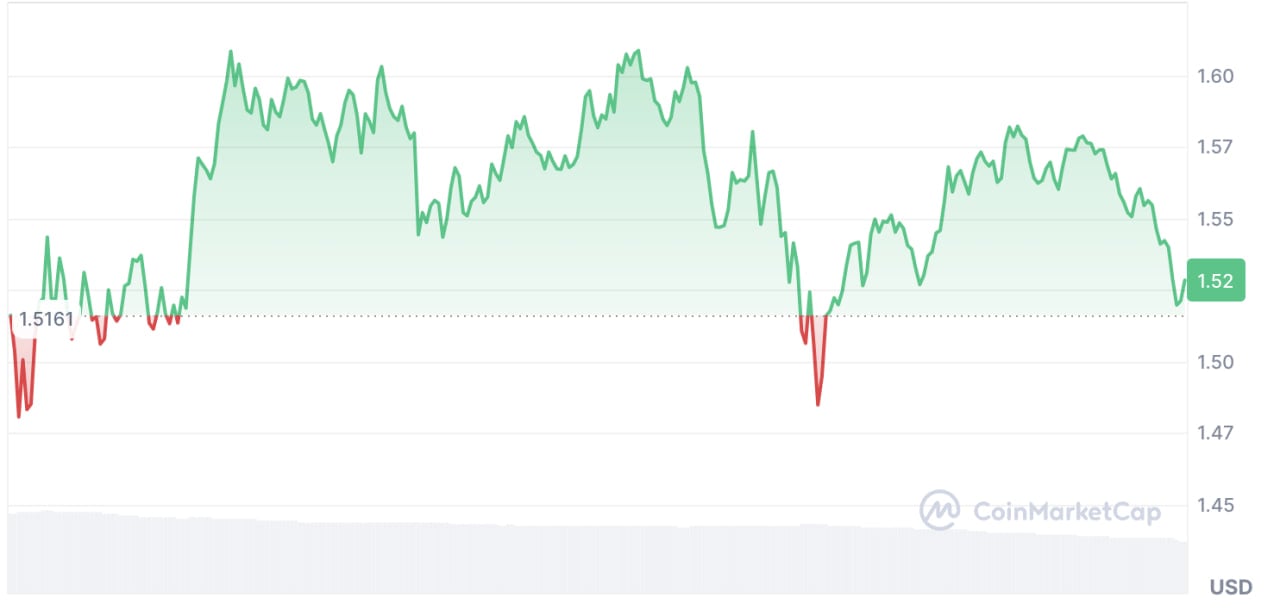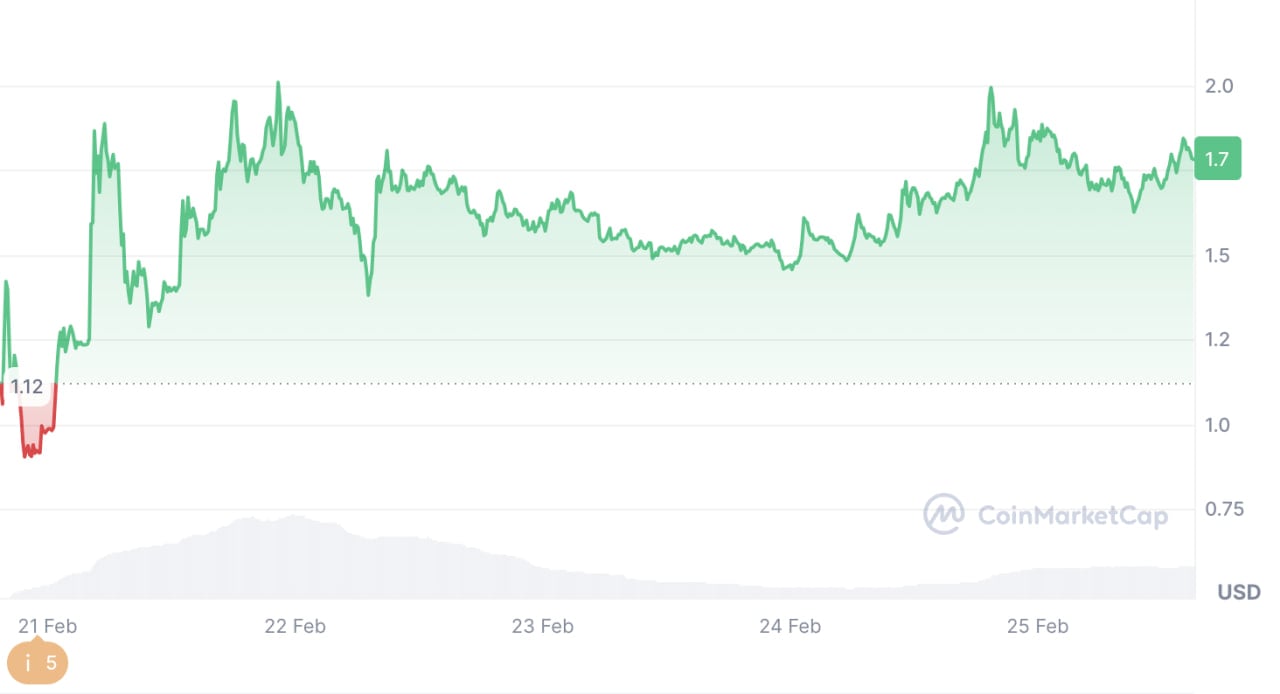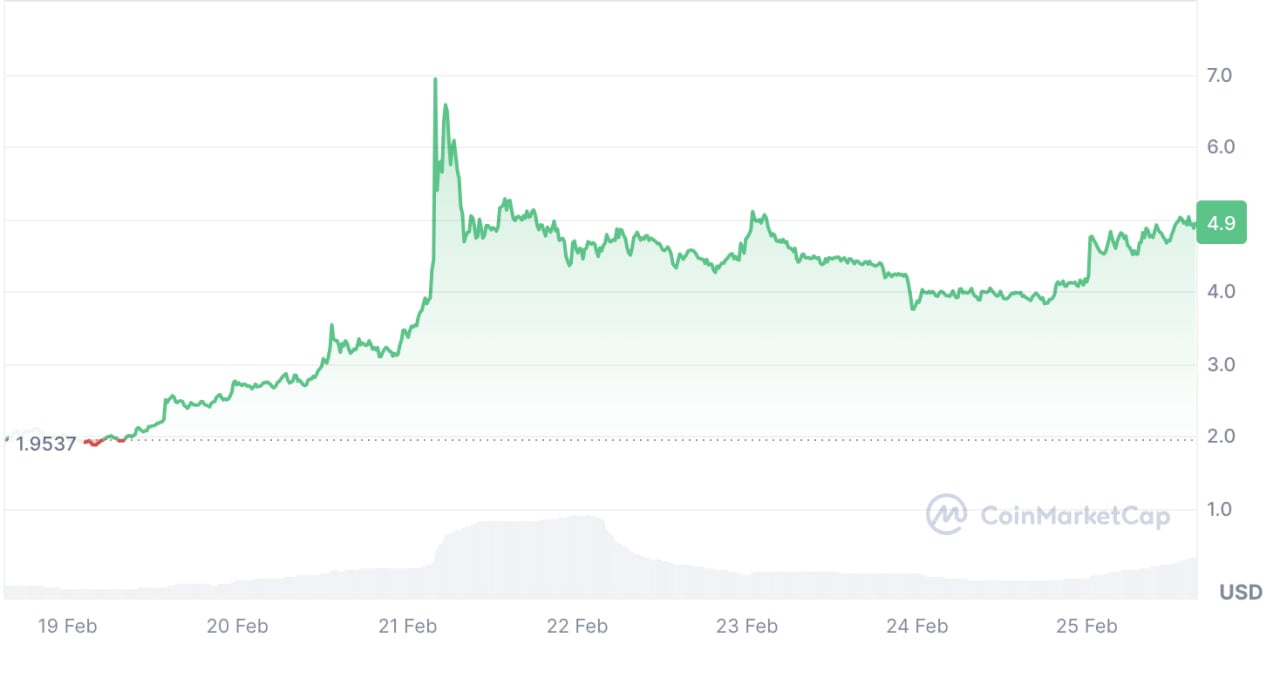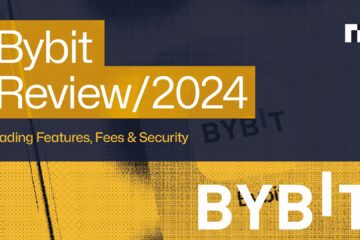Week of New TGEs: $Pi, $KAITO & $IP
Pi Network ($PI)
After several delays, Pi Network’s open mainnet is set to launch officially on February 20th. Following this, $PI has been listed on multiple exchanges such as OKX, Bitget, Bitrue, HTX, and BitMart.
$PI launched with an initial price of $2 and reached an all-time high of $2.2 since its listing. Despite a sharp drop two days after its listing, the Stellar Consensus Protocol’s current stability at $1.58 is remarkable.

Source: CoinGecko
Kaito AI ($KAITO)
Kaito AI is a leading platform regarding AI & InfoFi by leveraging its custom LLM tailored for the crypto domain. With a vision to revolutionize information accessibility in Web3, Kaito AI transforms fragmented data into valuable insights, enabling users to make more informed decisions.


Source: CoinGecko
On February 20, Kaito opened its airdrop claim, in which the allocation was tied to its Yaps Program. Thereafter, the $KAITO price went steady above $1.61, indicating strong community support, token usecase and buying interest post-TGE.
Kaito’s post-TGE resilience highlights the effectiveness of its “Yap-to-Earn” model and strong community engagement.
Unlike Pi’s broad but untested base, Kaito’s niche focusing on AI-driven initiatives and governance features gives it staying power.
Learn more: What is Kaito AI?
Story Protocol (IP)


Source: CoinGecko
Story Protocol’s $IP token, launched with its mainnet on February 13, 2025, has seen a standout performer since its TGE. By February 20, the token surged to an all-time high of $7.11 and currently stands at $4.9 as of today.
$IP price: Updated on February 25. Source: CoinMarketCap
The surge to $7.94 reflects speculative hype, while the correction to $3.96 shows profit-taking and market stabilization. In essence, $IP benefits from clear utility, which could partly came from the NFT craze of PFP3 drives the demand for $IP due to NFT trading activities.
Key points: PI Network may do well after the TGE because it had a low initial circulating supply. Meanwhile, both $IP and $KAITO, which are native tokens, play important roles that encourage whales to accumulate.
OpenSea Faces Controversy For Its New Reward System
OpenSea launched the beta version of its OS2 platform on January 28, introducing an XP points system—one of the mechanisms used to determine the amount of $SEA users may receive in the upcoming airdrop.
XP points can be earned through listing NFTs, making collection offers, or other interactive elements that highlight XP-earning actions.
However, the NFT community quickly voiced their dissatisfaction with this system, criticizing it for encouraging wash trading and prioritizing platform profits from listing and bidding fees over supporting creators.
Learn more: Opensea and the Harsh Reality of the NFT Market
Monad Public Testnet Launch


Source: Monad
Monad is making a significant advancement with the launch of its public testnet on February 19. This marks a key milestone following the completion of its closed testnet phase at the end of 2024.
The testnet will allow the blockchain community to experience and evaluate Monad’s processing capabilities in a real-world environment. Developers will have the opportunity to test their applications while also contributing to improving the system’s performance and security before its official launch in late 2025.
Among its core capabilities, the testnet introduces a gas limit of 300 million gas per second, expected to support a throughput of 10,000 transactions per second (TPS).
Learn more: Monad Launches Public Testnet Today
Monad is such a potential Layer 1 EVM blockchain, as explained in a previous article . Therefore, investors should closely monitor the Monad Airdrop to secure early Testnet access and potentially earn substantial airdrop rewards.
Explore how to join Monad Airdrop effectively and easily here.
Hackers Steal $1.4 Billion from Bybit
On February 21, Bybit suffered a massive security breach, resulting in the theft of approximately $1.46 billion in Ethereum (ETH) and related tokens from one of its offline cold wallets. This incident is considered the largest cryptocurrency hack in history, surpassing previous records like the $611 million Poly Network theft in 2021.
The attack occurred during a routine transfer from a multisignature cold wallet to a warm wallet, where hackers used a sophisticated method to manipulate the transaction process. They masked the signing interface to deceive Bybit’s team into approving a malicious transfer, allowing the funds to be siphoned to an unknown address.
The stolen funds, primarily ETH and staked tokens like stETH and mETH, were quickly dispersed across multiple wallets and laundered through decentralized exchanges, cross-chain bridges, and services like eXch, with some converted into Bitcoin to obscure the trail.
Bybit’s CEO, Ben Zhou emphasized the company’s commitment to recovering the funds, offering a 10% reward for assistance from cybersecurity experts, and collaborating with authorities and forensic teams to trace the assets.
Read more: Recap of the $1.4 billion robbery from Bybit by hackers
Next Steps
Last week’s crypto and NFT market witnessed ups and downs—from TGE highs to a historic hack—setting the stage for both opportunity and caution.
$PI, $KAITO and $IP are holding strong post-TGE; track their ecosystems (Kaito’s Yaps, Story Protocol’s IP Portal) for signs of sustained growth, while $PI with less utility in tokens is still questionable.
At the moment, Monad is one of the most to-watch protocols for Airdrop potential.
Bybit’s $1.4 billion hack is a stark reminder: audit your security. Move assets to hardware wallets or trusted multisignature setups and avoid keeping large sums on exchanges even in cold wallets.
 Bitcoin
Bitcoin  Ethereum
Ethereum  Tether
Tether  XRP
XRP  USDC
USDC  Solana
Solana  Lido Staked Ether
Lido Staked Ether  TRON
TRON  Dogecoin
Dogecoin  Cardano
Cardano  Figure Heloc
Figure Heloc  WhiteBIT Coin
WhiteBIT Coin  Wrapped stETH
Wrapped stETH  Bitcoin Cash
Bitcoin Cash  Wrapped Bitcoin
Wrapped Bitcoin  USDS
USDS  Chainlink
Chainlink  Wrapped eETH
Wrapped eETH  Binance Bridged USDT (BNB Smart Chain)
Binance Bridged USDT (BNB Smart Chain)  LEO Token
LEO Token  WETH
WETH  Hyperliquid
Hyperliquid  Monero
Monero  Stellar
Stellar  Zcash
Zcash  Coinbase Wrapped BTC
Coinbase Wrapped BTC  Ethena USDe
Ethena USDe  Litecoin
Litecoin  Sui
Sui  Avalanche
Avalanche  Hedera
Hedera  Shiba Inu
Shiba Inu  sUSDS
sUSDS  USDT0
USDT0  Dai
Dai  Mantle
Mantle  Toncoin
Toncoin  World Liberty Financial
World Liberty Financial  PayPal USD
PayPal USD  Cronos
Cronos  Ethena Staked USDe
Ethena Staked USDe  Uniswap
Uniswap  Polkadot
Polkadot  MemeCore
MemeCore  Aave
Aave  Bittensor
Bittensor  USD1
USD1  Canton
Canton 


